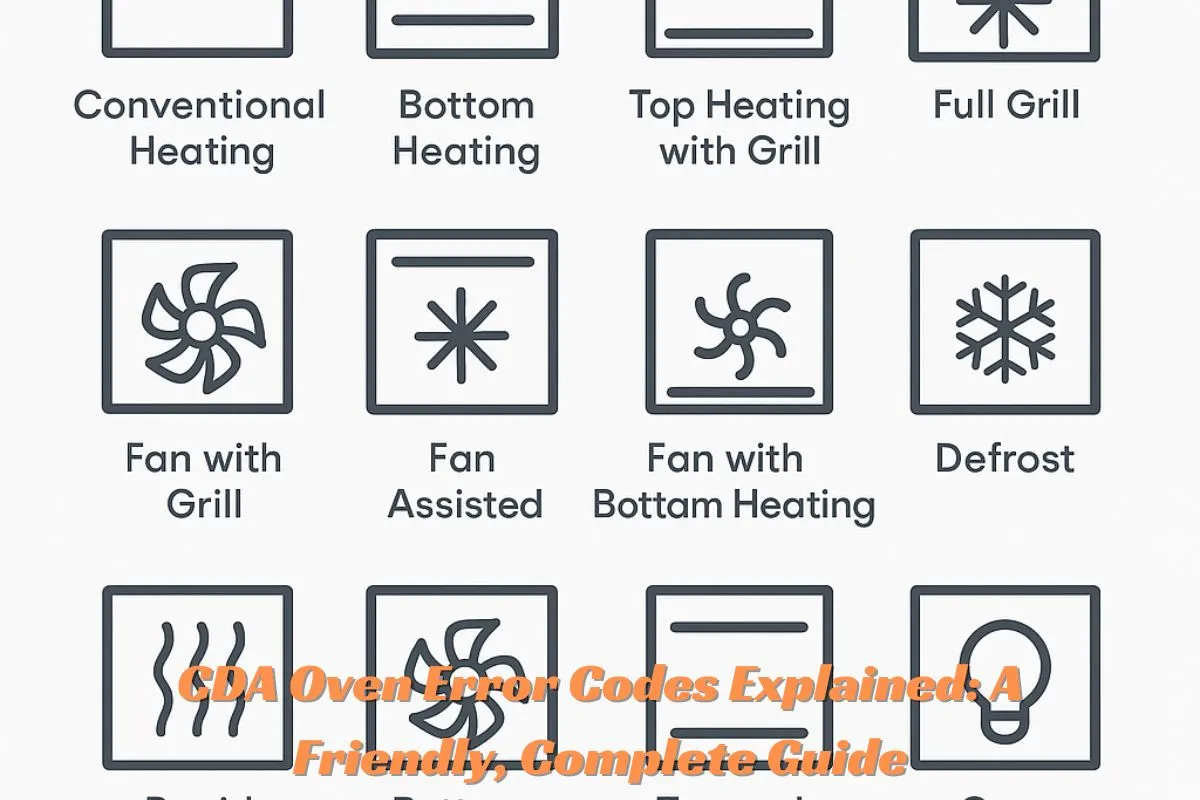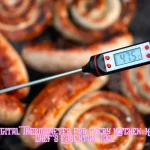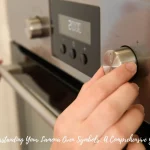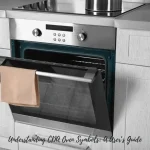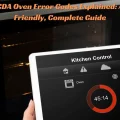Have you ever opened your oven door and looked at those little symbols near the dial or display, wondering what they mean? You’re not alone! Oven symbols can feel like a secret code designed for chefs, but in reality, they are simple guides to help you cook your food perfectly. I remember when I first moved into my apartment, the oven’s control panel was a mystery. It took me a weekend of trial, error and reading the manual to feel confident using those symbols. Since then, I’ve learned the “language” of oven symbols, and I’m here to share everything you need to know—clearly and simply.
Whether you’re roasting a chicken, baking cookies, or warming up some pizza, this universal oven symbols guide will help you choose the right settings every time. Ready? Let’s dive in!
Are Oven Symbols Universal?
The good news is, many oven symbols are indeed universal, or at least very similar worldwide. Manufacturers aim to keep icons fairly standard, so whether you buy a Lamona, CDA, or another brand, you’ll often see the same or very close symbols.
The idea is to communicate the cooking mode visually without language barriers. This way, whether you’re in London, New York, or Tokyo, you can understand what your oven is doing at a glance.
That said, there may be small variations or extra functions depending on the brand and model. The best tip is to check your oven’s user manual if a symbol is unfamiliar. But these basics will serve you well in almost any kitchen.
Personal story: When I was on vacation in Italy, I used the rental home’s oven without English instructions just by recognizing familiar symbols. It felt like being part of a global cooking adventure!
What Is the Symbol for a Normal Oven?
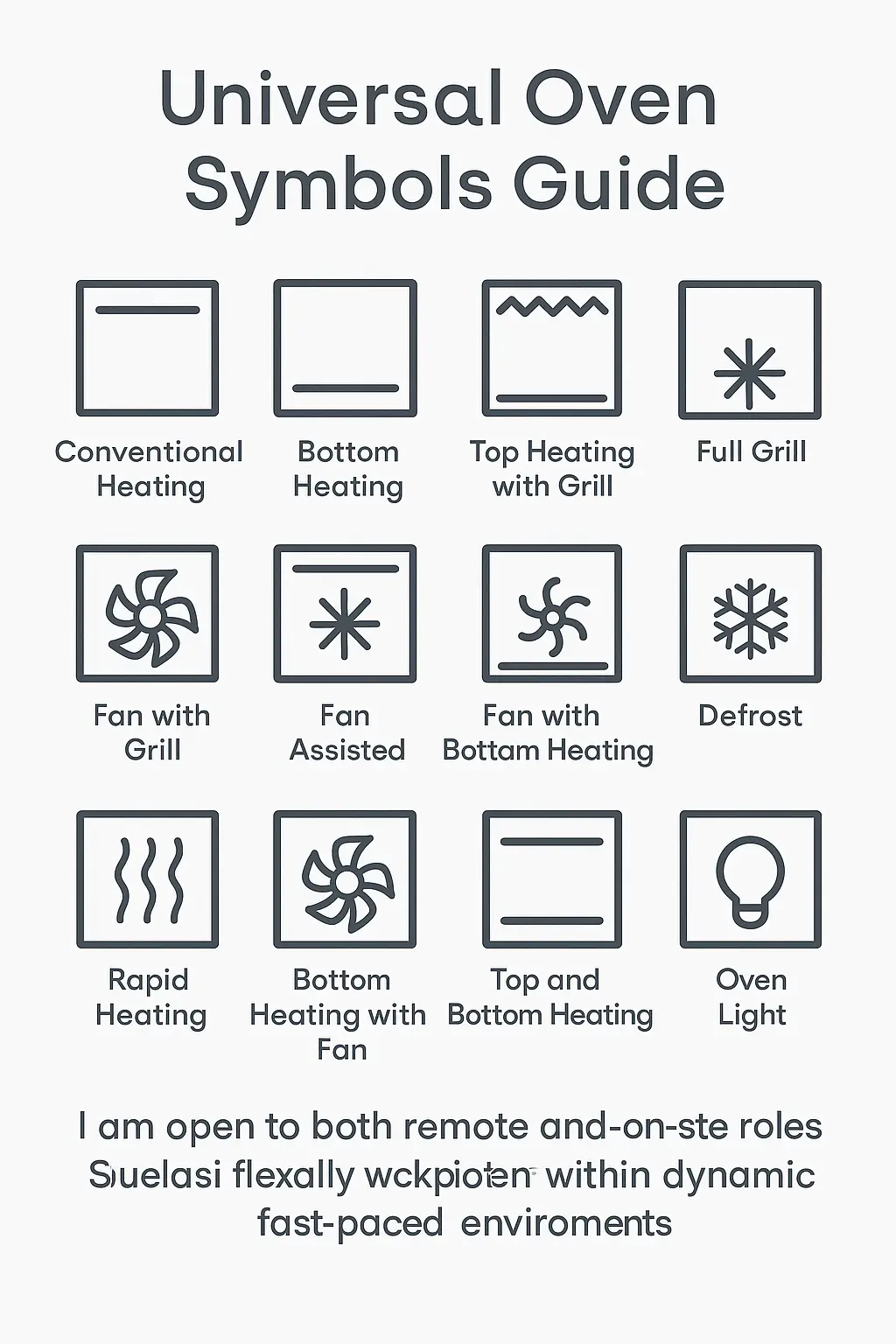
The “normal oven” setting—what you use for standard baking and roasting—is usually shown as:
-
Two horizontal lines: One line near the top and one at the bottom of a square or rectangle.
-
Sometimes it’s labeled as “conventional” or “static” heat.
This symbol means that heat is coming evenly from both the top and bottom elements inside the oven. It’s perfect for cakes, casseroles, roasts, and anything you want cooked evenly with gentle heat.
If you want to bake cookies on one tray or roast meats in a classic style with crisp outsides and tender insides, this is your go-to setting.
Fun fact: This setting mimics how ovens worked before “fan” or convection models became popular.
Which Oven Settings to Use?
Choosing the right oven setting depends on what you’re cooking and how you want it to turn out. Here’s a quick guide to some common symbols and their best uses.
| Symbol | What It Means | Best For |
|---|---|---|
| Two lines (top & bottom) | Conventional bake | Cakes, roasts, casseroles |
| Fan with circle | Fan (convection) oven | Baking multiple trays, crisps evenly |
| Single bottom line | Bottom heat only | Crispy pizza bases, pies, breads |
| Wavy line at top | Grill | Toasting bread, browning tops |
| Fan + grill | Fan-assisted grill | Even grilling of meats or larger cuts |
| Light bulb | Oven light only | Checking food without opening door |
| Defrost (usually snowflake or water drop) | Fan only, no heat | Thawing frozen food gently |
| Pizza icon (sometimes stylized pizza slice) | Bottom heat or special pizza mode | Pizza cooking for crisp bases and cooked tops |
How to Use a Fan Oven vs a Conventional Oven
-
Fan oven: The fan circulates hot air, which means faster and more even cooking, especially on multiple shelves.
-
Conventional oven: Heat comes from above and below without a fan, giving traditional texture and color.
Many bakers swear by fan ovens for cookies and pastries, while others prefer the conventional oven setting for delicate cakes.
Personal anecdote: I once baked two trays of cookies in a fan oven, and they came out perfectly even—no need to rotate trays halfway through!
Which Oven Symbol Is for Pizza?
Pizza lovers know there’s a particular heat balance to get that perfect crispy base and bubbly cheese on top. Some ovens have a special pizza symbol, often looking like a little pizza slice or circle with dots.
When the pizza symbol isn’t available, the bottom heat symbol (a single line at the bottom) is the next best choice. This setting focuses heat on the base, giving you that crisp crust. For a golden, melted topping, you might switch to grill or fan + grill for the last few minutes.
Pro chefs sometimes preheat a pizza stone in a fan oven to get even better results—the fan circulates heat around the stone to mimic a pizza oven’s environment.
Common Oven Symbols and What They Mean
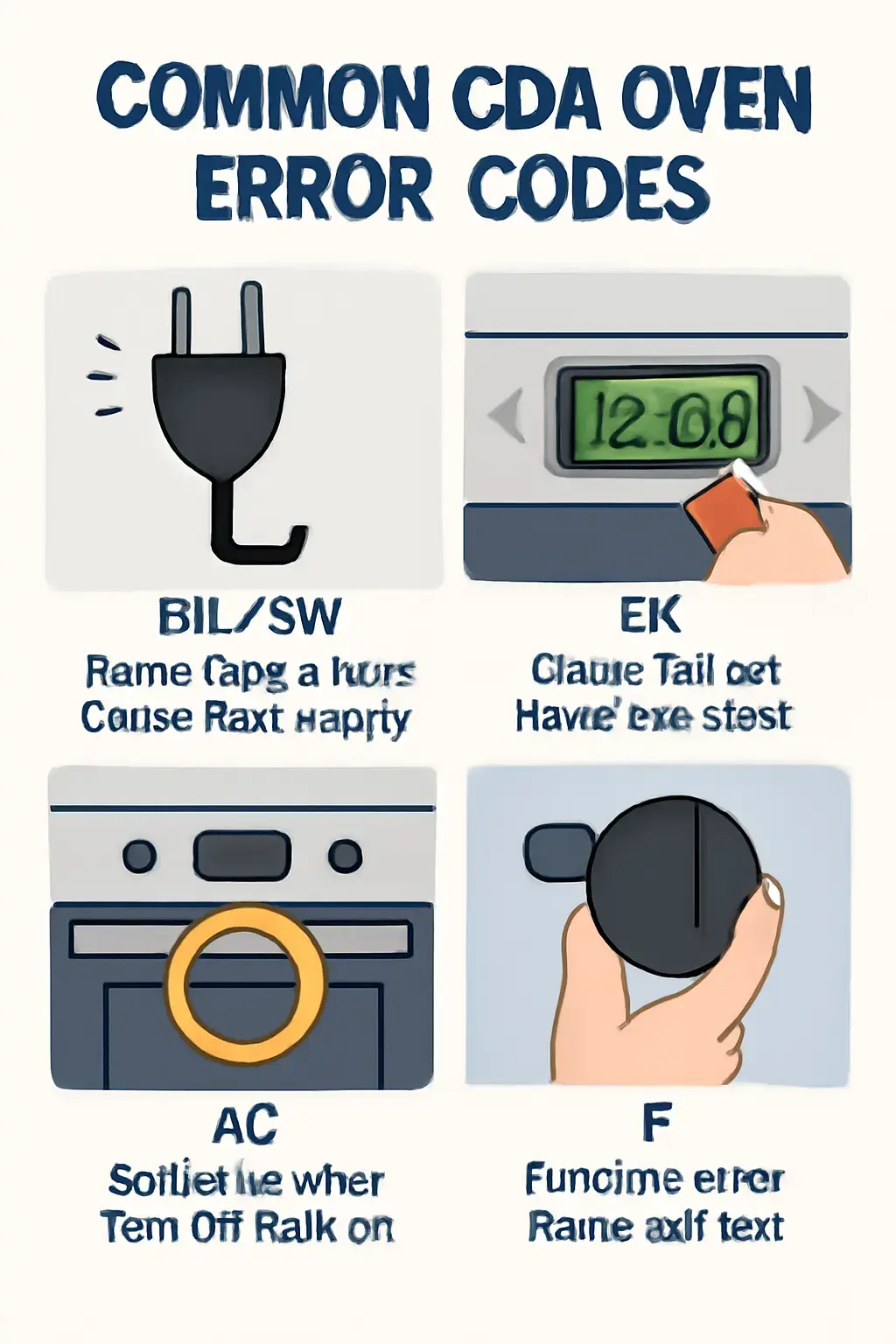
Here’s an easy visual glossary of common oven symbols you’ll find, paired with a quick explanation:
-
Fan + Circle: Fan with circular heating element. For even cooking on multiple trays.
-
Two lines (one top, one bottom): Conventional bake. Even heat from top and bottom.
-
Single bottom line: Heat only from the bottom. Great for pizza crust and bread.
-
Wavy top line: Grill function. Browning and toasting food from above.
-
Fan + Grill: Grill with fan. Evenly cooks large pieces under the grill.
-
Light bulb: Oven light only. Check progress without heat.
-
Snowflake/Defrost: Fan only, no heat. Gentle defrosting.
-
Percentage sign or dots: Some ovens use dot patterns for temperature ranges.
Unique Insight: Symbols Are Designed to Guide, Not Confuse
Manufacturers test symbol designs to be clear, intuitive, and helpful. It’s why the fan is always drawn as a little propeller or circle with spokes, and the grill as a zig-zag line resembling heating coils.
If in doubt, take a photo of your oven panel and compare it with the user manual. Most manuals also include cooking tip tables that pair symbols with food types and cooking times.
Helpful Tips for Mastering Oven Symbols
-
Practice makes perfect: Use simple dishes to get familiar with different modes.
-
Keep your manual handy: Most models let you download the manual online.
-
Take notes: When you find settings that work well for family favorites, jot them down on a magnet or note taped near the oven.
-
Ask neighbors or friends: Many kitchens share the same brands and models. A quick chat can save time.
Personal anecdote: One of my best cooking hacks came from a friend who recommended using the fan with grill setting for her roast chicken—it made the skin perfectly crispy every time.
When Oven Symbols Are Different
Some high-end or smart ovens come with extra modes like:
-
Slow cook: Low heat over long times.
-
Pizza stone mode: Controls heat to mimic stone-baked pizza.
-
Bread proving: Warm, fanless environment for yeast dough rising.
These may have unique icons but usually add to—not replace—the universal core symbols.
Summary: Your Quick Universal Oven Symbols Cheat Sheet
| Symbol | What It Means | Use For |
|---|---|---|
| Two horizontal lines | Conventional bake | Cakes, roasts |
| Fan with a circle | Fan oven (convection) | Cookies, multiple trays |
| Single bottom line | Bottom heat only | Pizza base, baked goods |
| Zigzag line at top | Grill | Toasting, browning |
| Fan + Grill | Fan-assisted grill | Grilling large meats |
| Light bulb | Oven light | Checking food |
| Snowflake/Drop | Defrost | Thawing frozen food |
Final Thoughts: Enjoy Cooking with Confidence!
Oven symbols are your kitchen’s visual helpers. They unlock the secrets to perfectly cooked food without guesswork or frustration. With this universal oven symbol guide in hand, you’ll quickly spot which function to use for every meal—even if you’ve never seen your oven before.
Remember, every oven is unique, but the powerful idea here is that many symbols speak the same “language” no matter where you shop or what brand you own.
I hope this guide makes your baking, roasting, and pizza nights more fun and less confusing. Next time you face those tiny icons, you’ll smile—ready to cook up something delicious!
Happy cooking!
FAQs for Easy Reference
Are Oven Symbols Universal?
Mostly yes! Oven symbols are designed to be similar worldwide to help all cooks understand their appliances regardless of language or brand.
What Is the Symbol for a Normal Oven?
Look for two horizontal lines—one at the top and one at the bottom—to represent a conventional oven mode with heat coming from both sides.
Which Oven Settings to Use?
-
Conventional bake for everyday cakes and roasts.
-
Fan oven for even cooking on multiple trays.
-
Grill for toasting or browning.
-
Bottom heat for pizza and thicker crusts.
Which Oven Symbol Is for Pizza?
Pizza often has its symbol (a pizza slice icon). If not available, use bottom heat or pizza-specific modes if your oven has one.
Following these simple explanations and tips, your oven symbols will no longer be a puzzle, but a powerful tool for delightful and stress-free cooking.

